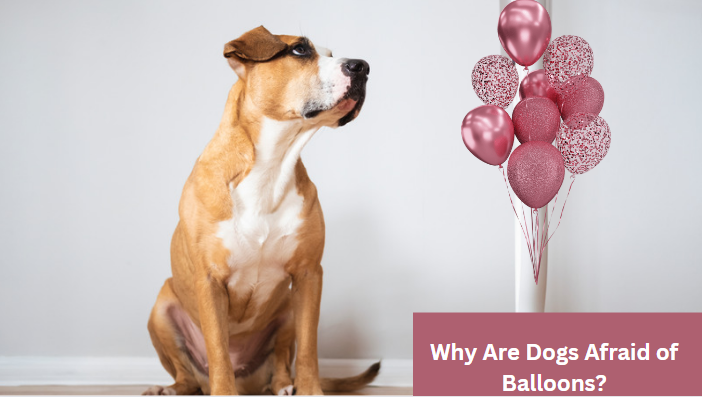Dogs, our loyal companions, often exhibit curious behaviors that leave us pondering the mysteries of their canine minds. One such curious phenomenon is the fear of balloons. In this article, we delve into the intriguing world of canine fear, exploring why some dogs are apprehensive when confronted with these seemingly innocuous objects.
Understanding Dogs’ Sensory Perception
Heightened Senses
Dogs experience the world through a lens of heightened senses, including acute hearing and a keen sense of smell. Unfamiliar objects can disrupt their familiar environment, triggering responses rooted in survival instincts.
Unfamiliar Objects
Balloons, being unusual and often unpredictable objects, can provoke a range of responses from dogs, from curiosity to outright fear.
Do Read: Can You Use Dermoplast on Dogs?
The Role of Sound Sensitivity
Sensitive Hearing
One key factor contributing to balloon fear is a dog’s extraordinary hearing ability. Dogs can perceive sounds at frequencies beyond human capability. Balloons, especially when popped, produce loud and sudden noises that can be distressing for our canine friends.
Balloon Popping Sounds
The loud pop of a balloon, amplified by a dog’s sensitive ears, can be startling and anxiety-inducing. This fear can be exacerbated if the dog has had a previous negative experience with a balloon popping.
Visual Stimuli and Canine Anxiety
Unpredictable Movement
Balloons are known for their unpredictable movements, floating and swaying in ways that may appear erratic to dogs. This unpredictability can trigger anxiety, especially in dogs that are sensitive to sudden changes in their environment.
Inflated Size
The sheer size of an inflated balloon might also be intimidating to dogs, particularly smaller breeds. The unnatural size and shape can create a sense of unease, contributing to their fear.
Past Traumatic Experiences
Dogs, like humans, can develop fear based on past traumatic experiences. If a dog has encountered a balloon-related incident that caused fear or harm, they may carry that negative association forward.
Dogs adopted from shelters, especially those with unknown histories, might display fear of balloons due to past experiences. It’s crucial for adoptive pet parents to be aware of and address such sensitivities.
Breed and Individual Variations
Certain breeds may be more predisposed to developing fears, including the fear of balloons. Understanding breed-specific traits helps in tailoring approaches to alleviate anxiety.
Each dog is unique, and their personalities play a significant role in how they respond to stimuli. While some dogs may be naturally more resilient, others may be prone to anxiety, requiring special attention.
Addressing Canine Balloon Fear
Desensitization Techniques
Desensitization involves gradual exposure to the fear-inducing stimulus. In the case of balloon fear, introducing balloons in a controlled and positive manner can help diminish anxiety over time.
Positive Reinforcement
Reward-based training, where dogs receive treats or praise for calm behavior around balloons, can create positive associations. This positive reinforcement helps shift their perception from fear to comfort.
Balancing Playfulness and Fear
Supervised Playtime
For dogs with balloon fear, supervised play with balloons can be beneficial. The key is to ensure that the experience is positive and non-threatening, gradually building confidence.
Recognizing Signs of Discomfort
It’s crucial for dog owners to be attentive to signs of discomfort or fear. These may include cowering, trembling, excessive barking, or attempts to flee. Recognizing these signals allows for timely intervention and support.
Real-Life Experiences and Testimonials
Personal Narratives
Many dog owners have successfully navigated and mitigated their dogs’ fear of balloons. Sharing these personal narratives can provide insights and encouragement for others facing similar challenges.
Challenges and Triumphs
Highlighting stories of both challenges and triumphs emphasizes the journey of overcoming balloon fear. Every small achievement contributes to building a more resilient and confident canine companion.
Conclusion
Understanding Canine Perspectives
In conclusion, a dog’s fear of balloons is a multifaceted issue, influenced by their heightened sensory perception, past experiences, and individual traits. Understanding and addressing these factors with empathy are essential for promoting a positive environment for our furry friends.
Empathy and Responsiveness
Dog owners are encouraged to approach their pets’ fears with empathy and responsiveness. By recognizing the unique needs of each dog, we can create an environment where they feel secure and loved.


